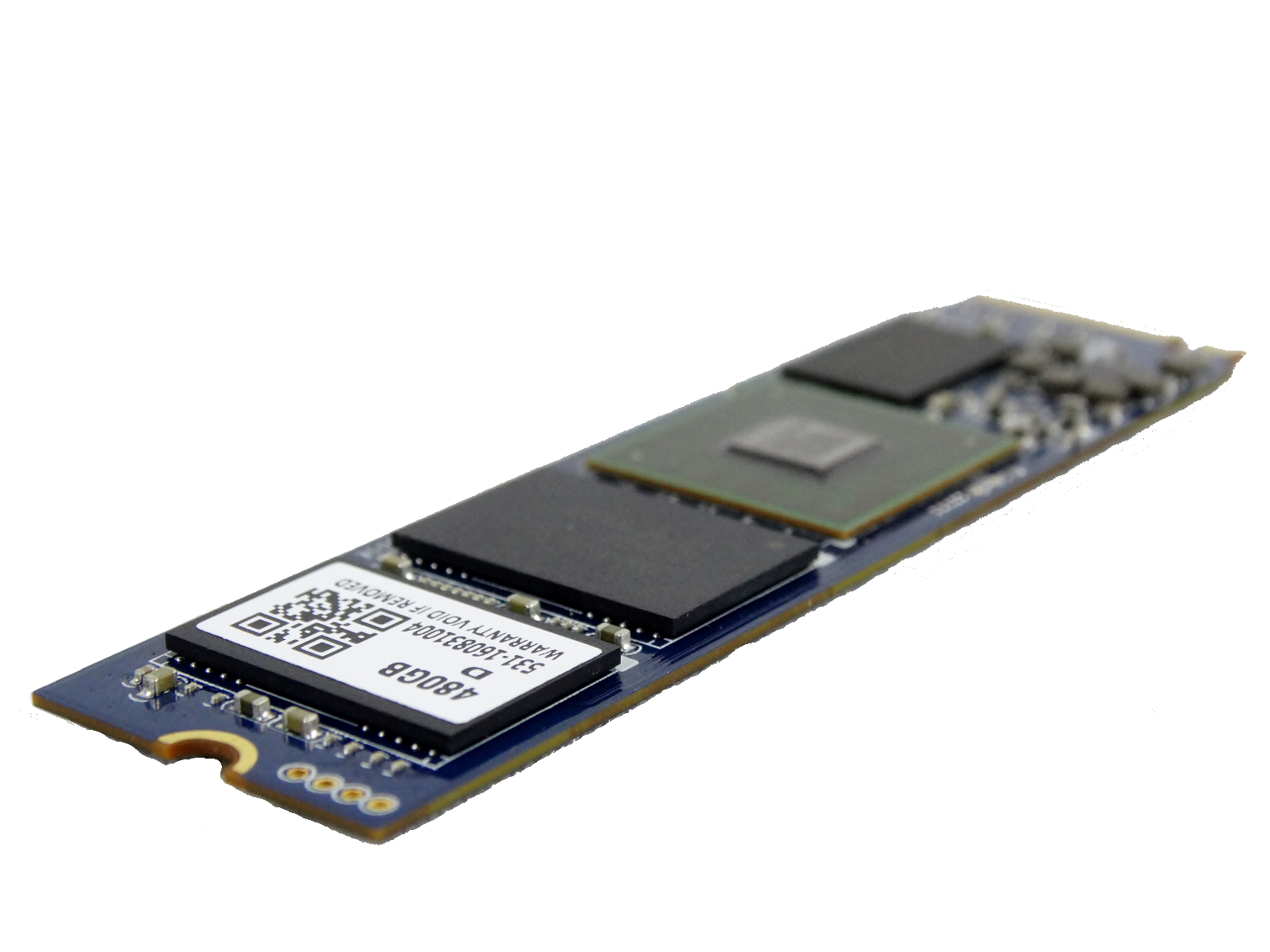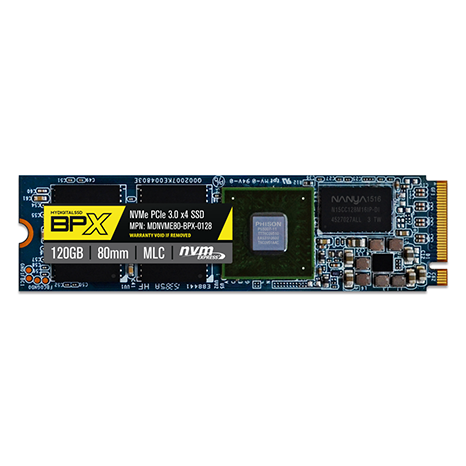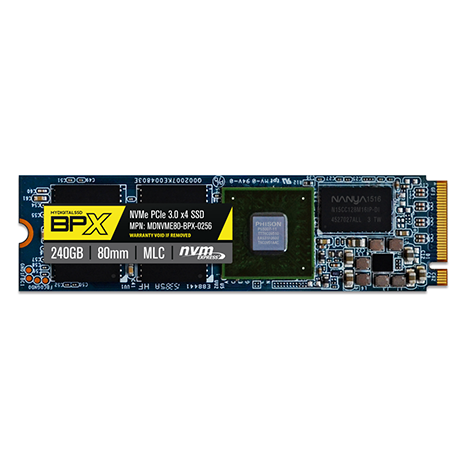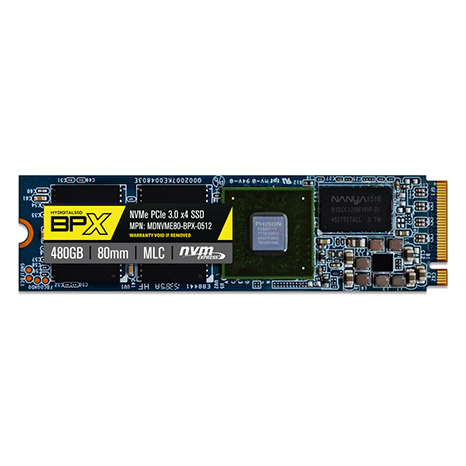Early Verdict
These are the NVMe SSDs you are looking for. MyDigitalSSD didn't just deliver a true entry-level NVMe SSD, but it made a product that competes with every consumer SSD on the market. The BPX is our pick from the entry-level 512GB NVMe class and our new go-to SSD when price is a concern. The BPX Series offer the best balance of features and best overall consumer SSD available for general use.
Pros
- +
Aggressive pricing
- +
Better than mainstream performance
- +
Excellent performance-per-dollar
- +
5-Year warranty
- +
Class-leading endurance rating
Cons
- -
Poor notebook battery life performance
- -
Potential supply issues
Why you can trust Tom's Hardware
Specifications And Features
For weeks, I've teased you with talk of more entry-level NVMe solid-state storage products coming to market to compete with the Intel 600p. We can finally unveil a Phison E7-powered MyDigitalSSD BPX that we feel is a solid value-focused SSD if you are looking to move beyond SATA, but are still shopping on a SATA budget. The BPX doesn't compromise on endurance thanks to 2-bit per cell (MLC) flash technology, and that also leads to increased performance. The best part is the MyDigitalSSD BPX matches Intel's 600p pricing in all three available capacities.
MyDigitalSSD does not have the same name recognition as many other SSD manufacturers, which some may see as a disadvantage. The company wants to build a brand by making products that sell for excellent prices rather than by throwing advertising dollars around. I've known the CEO for nearly a decade, which spans back to when he imported early SSDs from Asia into the US.
Many early netbook products used SSDs, but upgrade hardware was rarely available. These early SSDs were simply not available in the US, so MyDigital catered to underserved markets. The company would tediously design and manufacturer specialty SSDs that would only work in one or two models, like the Dell Inspiron Mini 9. These products, and the company, never received the glory of releasing the fastest consumer SSD. However, they were heroes to a small community of users looking to get the most out of low-cost consumer products that the manufacturers never intended to be opened or modified.
In recent years, MyDigitalSSD focused on mainstream products with the BulletProof (BP) series. Occasionally the company gets a product positioned at the right price and at the right time. We've tested and even recommended a few BP products before, and we've steered users away from some others.
The new BPX is the company's first NVMe SSD. MyDigitalSSD plans to use it to attack the Intel 600p in the emerging entry-level NVMe space. The little company taking on the giant international conglomerate sounds like a chapter straight out of David versus Goliath, but the tactics used are just as old. MyDigitalSSD plans to offer a superior product that is faster and more robust, and then follow with competitive pricing. Let's see where the stone hit.
Specifications
The MyDigitalSSD BPX will come to market in three capacities of 120GB, 240GB, and 480GB. A Phison PS5007-E7 controller is at the heart of each drive. The E7 is the same controller utilized in the Zotac SONIX add-in card ($348) and Patriot Hellfire M.2 (240GB $160 and 480GB $280). The BPX's big attraction is pricing, but we will get to that in a minute.
NVMe over PCIe allows you to achieve higher performance than you could attain over the SATA bus. The emerging entry-level NVMe products put pricing on par with premium SATA SSDs, but deliver higher performance. The MyDigitalSSD BPX lists all performance data in "up to" numbers that are identical for all capacities, but the performance specifications may change when the drives come to market. The sequential read performance tops 2,600 MB/s while sequential write breaks 1,300 MB/s. Random read performance surpasses 150,000 IOPS using four workers with four threads and the company used the same settings to achieve 265,000 random write IOPS.
Get Tom's Hardware's best news and in-depth reviews, straight to your inbox.
Features
- Phison PS5007-E7 Controller
- 2D MLC 4-Plane NAND Flash
- NVM Express 1.2 Interface
- PCI Express Gen 3 x4
- End-to-End Data Path Protection
- Static & Dynamic Wear Leveling
- SMART, TRIM, & RAID Support
- Smart ECC RAID ECC
- Windows & OSX Support
- Slim: 22 x 80 x 3mm
The Phison PS5007-E7 is a modern and feature-rich SSD controller that uses eight channels to maximize data flow. The flip chip design allows the controller to run cool, thus minimizing thermal throttle conditions. Historically, firmware and programming have always been Phison's weak link. The 2.1 firmware release we tested on the Patriot Hellfire M.2 increased real-world application performance, but it also decreased the synthetic benchmark results. The MyDigitalSSD BPX ships with the same 2.1 firmware. Many of the optimizations seem to increase background operations. The processes work to keep a drive performing at high speeds, but the synthetic workloads that most users run to measure performance suffer slightly. The obvious choice is for a tuned environment based on what you run most of the time, rather than what you will run just a few times to verify performance.
MyDigitalSSD paired the controller with Flash Forward (Toshiba / SanDisk) 15nm 2D MLC flash. MLC holds a strong advantage over 3-bit per cell (TLC) flash because it can sustain a high level of write performance before dropping into a lower steady state. MLC also doesn't require an SLC buffer to increase endurance or deliver high burst performance during write workloads.
Pricing And Accessories
The new MyDigitalSSD BPX series will initially sell for $69.99 (120GB), $114.99 (240GB), and $199.99 (480GB). The printed circuit board has provisions for an additional DRAM module so we may eventually see a 1TB model, but MyDigitalSSD has not confirmed nor announced a 1TB model at this time. The problem with such a product is the cost associated with sourcing NAND packages with higher die counts; they are currently in short supply. The current flash shortage has impacted high-density packages more than those with only two, three or four die bundled together. The BPX 480GB features eight die per package, a combination that is in short supply.
The BPX series doesn't ship with any accessories. At the time of writing, the company was preparing retail packaging, but it was not available for this review. We expect the BPX to ship in a blister pack similar to the BP5e M.2 series.
Warranty And Endurance
The MyDigitalSSD BPX ships with a 5-year limited warranty. The "limited" distinction comes from the terabytes written (TBW) endurance measurement, which serves as a general indication of how much data you can write to the flash before the warranty expires. We have finally moved into products with petabyte-class endurance. The BPX 480GB ships with a 1,400TBW endurance rating, which is the highest endurance of any consumer NVMe product on the market. The endurance number drops by half with each decrease in capacity, with a rating of 350TB for the 120GB SSD. For comparison, that is nearly a 5x increase over Intel's 600p 128GB NVMe SSD.
A Closer Look

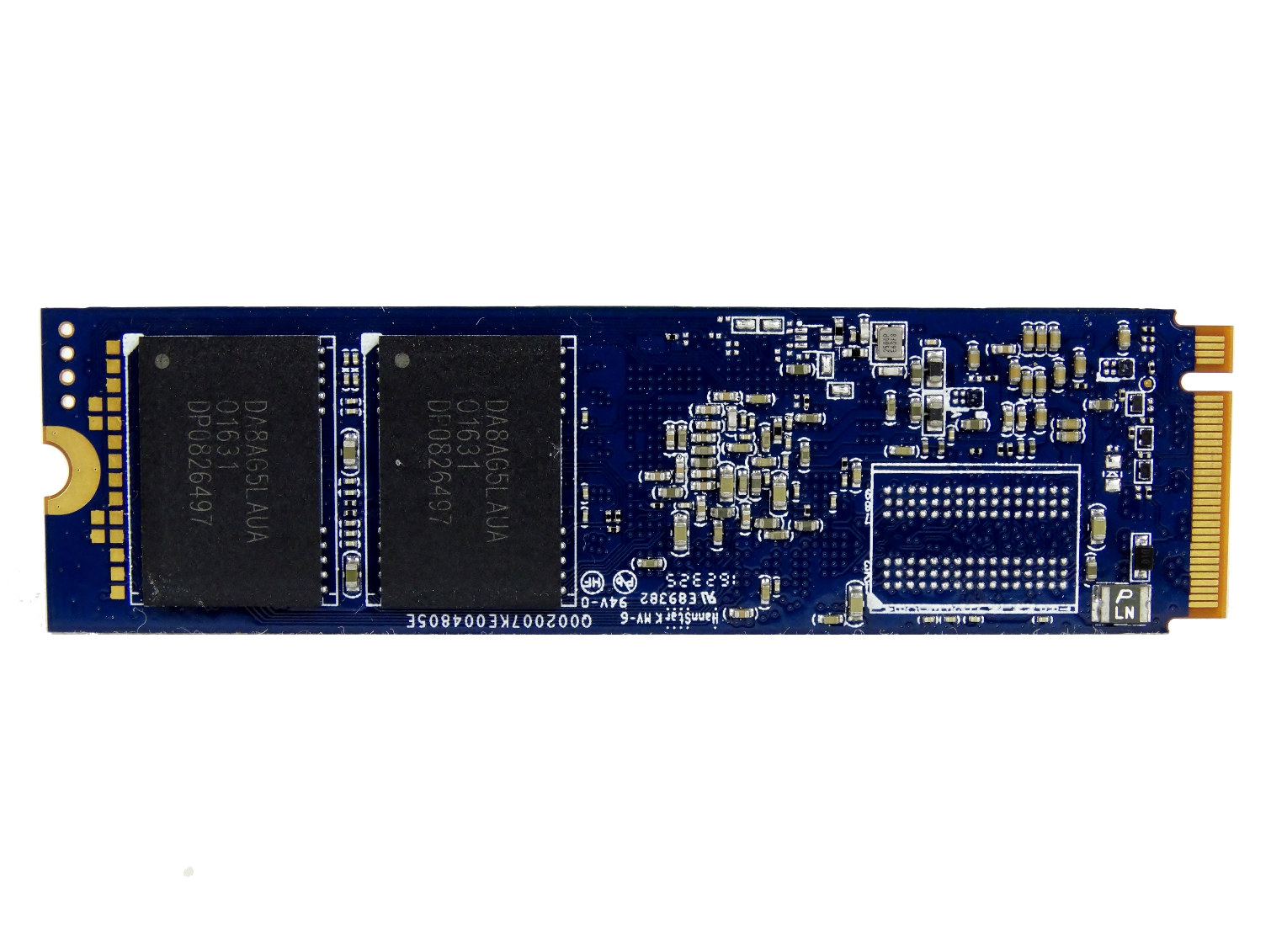

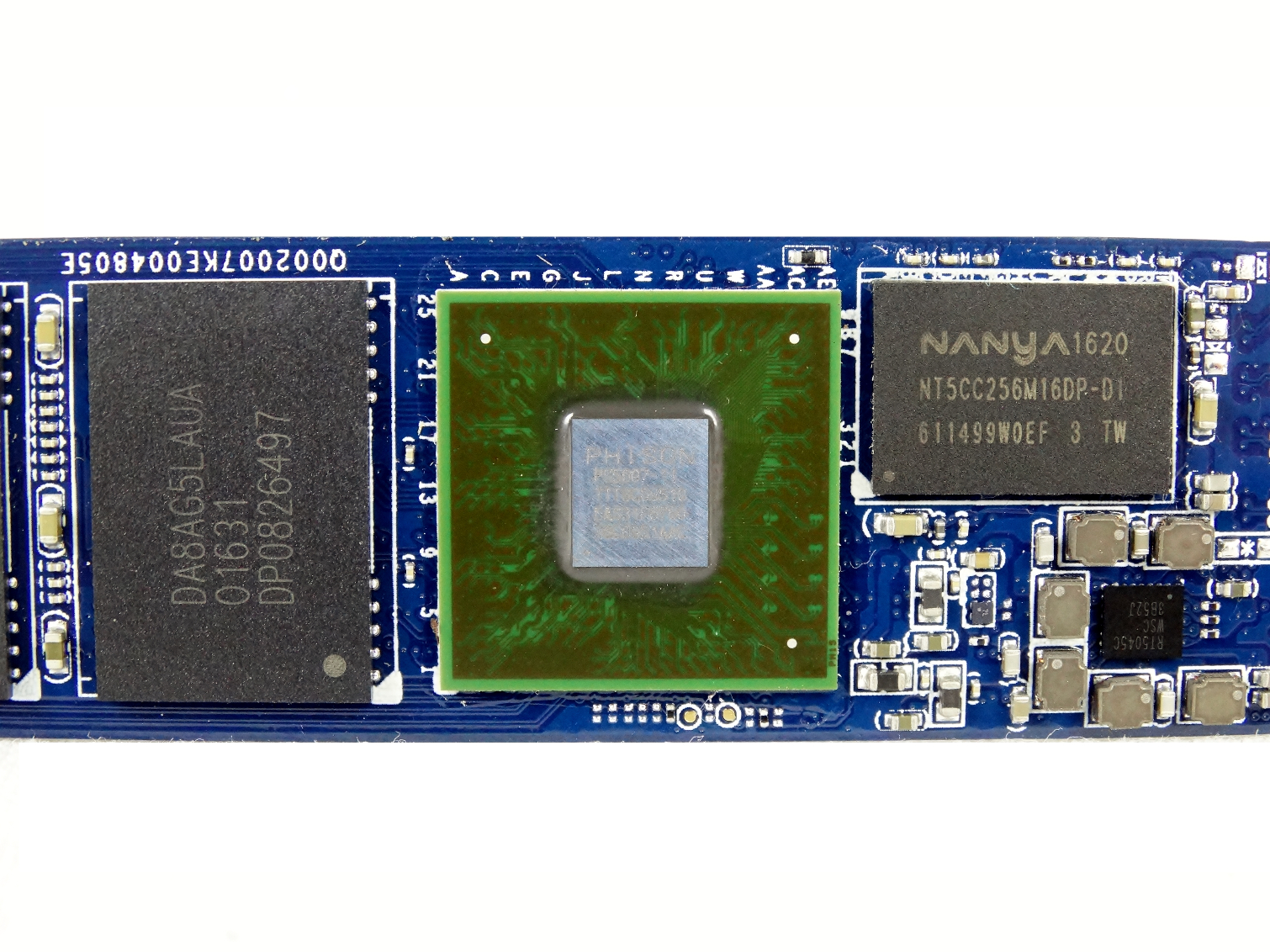
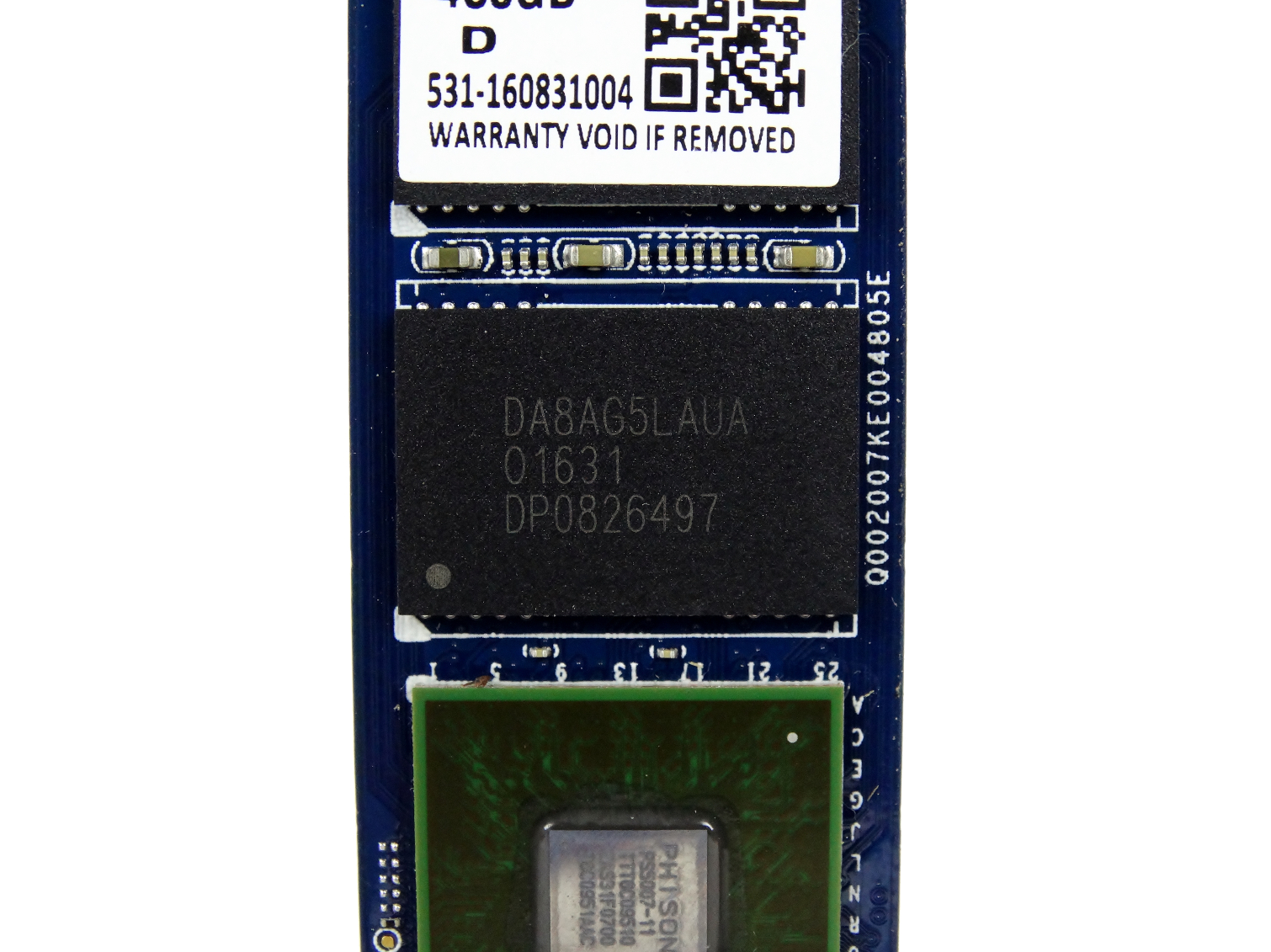
Physically, the MyDigitalSSD BPX is identical to the Patriot Hellfire M.2 we recently reviewed. We compared the drives side-by-side and found that the NAND part numbers are slightly different. Phison packages the flash but does not provide media with a working decoder like Micron and Intel.
The drive ships in the M.2 2280 form factor. It features components on both sides of the PCB, so you need to check compatibility for specific notebooks. Desktop motherboards and adapter cards provide ample space for dual-sided M.2 components.
MORE: Best SSDs
MORE: Latest Storage News
MORE: Storage in the Forums
Current page: Specifications And Features
Next Page Comparisons And Benchmarks - 512GB Class
Chris Ramseyer was a senior contributing editor for Tom's Hardware. He tested and reviewed consumer storage.
-
JakeWearingKhakis Look at the 2nd to last picture of the Phison chip. Whatever they did to make it look that cool, needs to be a standard thing!Reply -
Game256 This is actually not a bad budget NVMe SSD. This SSD is more like what Intel 600p should look like. Because Intel 600p is a disgrace for a NVMe drive.Reply
However Samsung 960 EVO will cost about the same, especially 250 Gb version. -
InvalidError Reply
What is so special about that picture? The "wavy" pattern? Nothing special about that, it is just an uneven wafer cut, possibly caused by a worn diamond saw blade, insufficient lubrication/flushing, uneven pressure through the cut or any number of other flaws in the wafer cutting process.18792461 said:Look at the 2nd to last picture of the Phison chip. Whatever they did to make it look that cool, needs to be a standard thing! -
shrapnel_indie It's just frustrating when you find a review someplace and all it turns out to be is pretty much the marketing description verbatim (or nearly so) and no hands-on testing, lab or otherwise. (You see this quite a bit with products unfortunately.)Reply
It's one reason sites like this can be, and are, valuable tools. Keep up the good work. -
Jordan_72 Thank you for the article, it will be very helpful for me when considering my next storage solution.Reply -
Xajel I wonder how these will compare against Samsung 960 Evo, for the 512GB part, Samsung is $50 pricier than this with a little higher performance than this on paper, but with less enduranceReply -
CRamseyer It will be interesting to see for sure. We tested the PM961 (results are in the 512GB charts) and its a close battle. It really depends on your workload but as they say, $50 is $50.Reply -
Bruce427 Thanks for the great review, Chris.Reply
I was all set to order the 240GB version as a place holder until the Samsung 960 drives are delivered (looks like Samsung is going to significantly miss their "October" target -- especially on the EVOs).
But the exceptionally low notebook battery life spoiled the deal for me.
You said Phison has been unable to replicate your low notebook battery life results with the E7 controller. Is it possible that the drive might exhibit better battery life performance in a notebook other than a Lenovo? -
nebun where is the heatsink....these things get really hot under load....they really need to do something about it....not throttle it down...that's a patch, not a fixReply -
Brian_R170 The listed price doesn't quite match the Intel 600p street price, but maybe when it hits retailers, it'll be closer.Reply
Not many reviews of MyDigitalSSD products or service compared to better-known brands, though.
